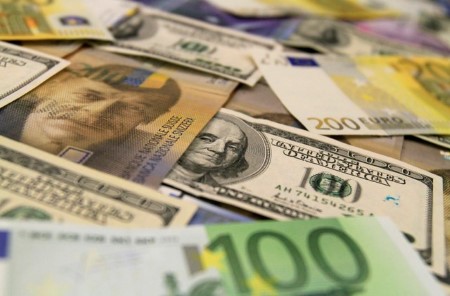




Policy Rate Updates: Double cut finale
 DOWNLOAD
DOWNLOAD

Monthly Economic Update: One for the road
 DOWNLOAD
DOWNLOAD

Inflation Update: Still low, still slow
 DOWNLOAD
DOWNLOAD


Yields up as debt ceiling talks drag on, June T-bills top 7%

NEW YORK, May 24 (Reuters) – Key US Treasury note yields ticked higher on Wednesday, while yields surged above 7% on some bills due for repayment on June 1, the first day that the government might not be able to make payments without a debt ceiling increase.
Investors shunned debt at risk of not being repaid if the US Treasury Department runs out of cash. The yields on bills due on June 1 were last at 7.1222%, and briefly got as high as 7.3710%. That is up sharply from Tuesday’s close of 5.992%. Other bills due on June 6 also rose as high as 7.491%.
Democratic US President Joe Biden and top congressional Republican Kevin McCarthy’s negotiators resumed talks that the White House called productive on Wednesday to try to close a deal to raise the USD 31.4 trillion US debt ceiling and avoid a catastrophic default.
The yield on benchmark two- and 10-year notes edged down in the afternoon after the Federal Open Market Committee released minutes of its May meeting, where the Federal Reserve raised interest rates 25 basis points. The transcript showed agreement among policymakers that the case for further interest-rate tightening had become “less certain.”
The yield on 10-year Treasury notes still ended up 3.8 basis points at 3.736%.
“To some extent, sellers are just getting exhausted. It might be oversold,” said Kim Rupert, managing director of fixed income analysis at Action Economics in San Francisco.
“The debt limit is certainly creating a lot of anxiety. The June bill spiked over 7% today.”
Recent comments from Fed officials had fueled uncertainty about whether the central bank will pause its rate-hiking cycle at its mid-June meeting, indicating officials are not in unison about the path of monetary policy.
Expectations for another 25-basis-point hike from the Fed at the June meeting have edged up recently and are currently at 34%, up from 28.1% on Tuesday, according to CME’s
FedWatch Tool.
The yield on the 30-year Treasury bond rose 2.6 basis points to 3.978%.
The yield on one-month bills hit another record high of 5.892%, as concerns about payments coming due when the Treasury is most vulnerable to running out of money keep investors away. The yield was last at 5.729%.
The Treasury auctioned USD 43 billion in 5-year notes on Wednesday and saw strong demand, with a bid-to-cover ratio of 2.58 and high yield of 3.749%. Treasury’s USD 42 billion sale of two-year notes also went well on Tuesday, with a high yield of 4.30%.
A closely watched part of the US Treasury yield curve measuring the gap between yields on two- and 10-year Treasury notes, seen as an indicator of economic expectations, was at a negative 62.7 basis points.
The two-year US Treasury yield, which typically moves in step with interest rate expectations, was up 8.4 basis points at 4.368%.
“You are essentially getting conflicting stories out of everything because you have such a sharply inverted curve at the very front,” said Matt Orton, chief market strategist at Raymond James Investment Management in St. Petersburg, Florida. “So you have a curve worried about the US and its ability to pay back debt and potentially be downgraded, sharply falling.
“Then you have basically the back of the curve still saying at the end of the day everything is going to be just fine, no recession, the economy is going to be good.”
The breakeven rate on five-year US Treasury Inflation-Protected Securities (TIPS) was last at 2.25%, after closing at 2.234% on Tuesday.
The 10-year TIPS breakeven rate was last at 2.2702%, indicating the market sees inflation averaging 2.3% a year for the next decade.
(Reporting by Alden Bentley and Chuck Mikolaczak; Editing by Leslie Adler and Richard Chang)
This article originally appeared on reuters.com





 By Reuters
By Reuters